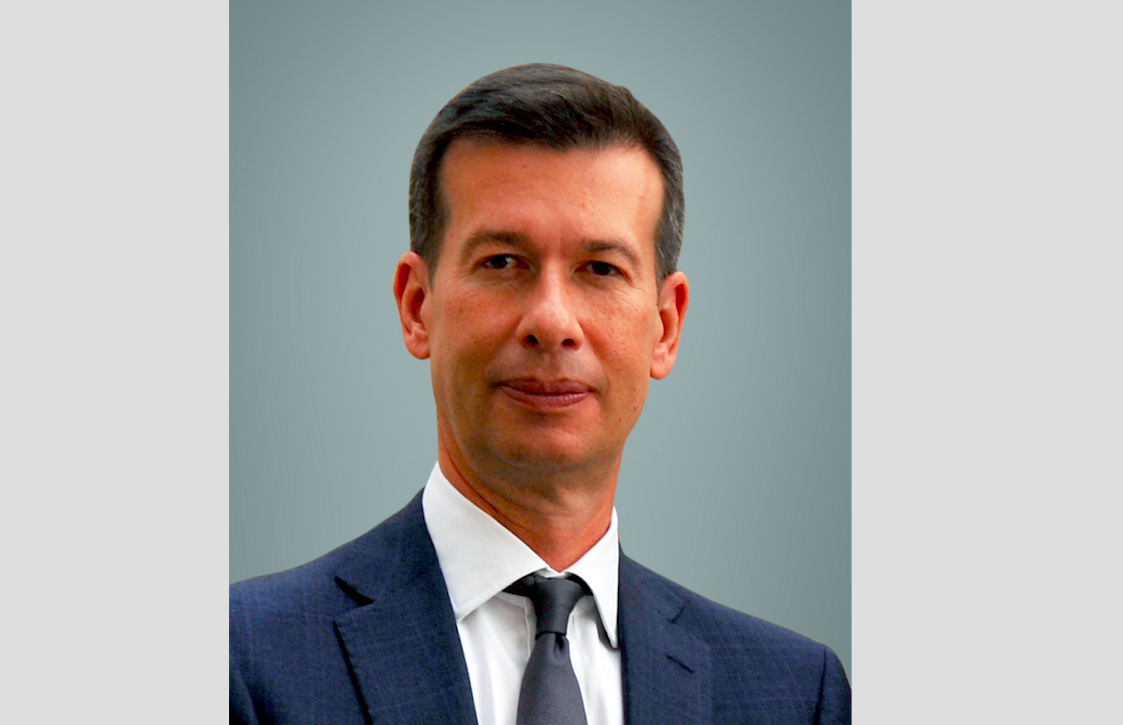MAPFRE Economics prevé una contracción de la economía española de al menos el 5,6% y una tasa de paro del 18% este año
| Por Alicia Miguel | 0 Comentarios

MAPFRE Economics, el Servicio de Estudios de Mapfre, ha revisado de forma abrupta sus previsiones sobre la economía mundial en medio de un clima de fuerte incertidumbre por el impacto del COVID-19 sobre la actividad sin precedentes. Los expertos del grupo asegurador explican que nos encontramos en un escenario de incertidumbre extrema, en el que resulta imposible anticipar el resultado de las decisiones de política económica y social.
Por lo tanto, en la actualización trimestral de su Informe “Panorama económico y sectorial 2020” modifican sus estimaciones e incorporan un amplio rango en función de un escenario base y otro escenario base estresado, que pueden variar en función del impacto que finalmente generen la propagación del virus y las medidas de supresión o contención que eventualmente se adopten. Con este nuevo criterio, que se aplicará mientras persista la crisis, esperan que la economía mundial se contraiga entre un 3% y un 8,2% para este año. “El coste económico es mayúsculo, debido a las disrupciones de suministros, la aversión al riesgo y las implicaciones financieras que puede llegar a alcanzar”, señalan en el informe.
En este contexto, se ha vivido una sincronía global en el relajamiento de las condiciones monetarias y financieras, aunque con un desarrollo considerablemente menos coordinado e irregular desde el punto de vista de las medidas de política fiscal, las cuales, en general, contemplan estímulos directos, indirectos y de garantías que han oscilado desde el 15% del PIB en algunos países, al 2% en otros. De esta forma, el escenario base de crecimiento económico e inflación que se incluyen en el informe es, por lo tanto, muy negativo entre los países desarrollados y, más aún, para el caso de los mercados emergentes debido a las vulnerabilidades acumuladas durante la última década y a la fuerte contracción de los ingresos del exterior, especialmente debido a la caída del petróleo.
El crecimiento económico revertirá con mayor o menor fuerza en 2021 y arrastrará una factura bajo la forma de incremento de deuda pública de, al menos, el 15% del PIB global.
Contracción ecónomica y paro en España
En el caso concreto de la economía española, el Servicio de Estudios prevé una desaceleración de entre el 5,6% y el 10,7%, pero advierten de que es una cifra que se irá revisando en función de la extensión del periodo de confinamiento. “La actividad económica ya se encontraba en una tendencia de desaceleración antes de que fuera impactada por la crisis sanitaria del COVID-19 y por el subsecuente parón económico que se hará visible en las cifras del primer trimestre”, explican los economistas.
España, según MAPFRE Economics, entrará rápidamente en recesión, como ya muestran los primeros indicadores, principalmente los negativos datos de empleo. El parón de la actividad en los sectores de proximidad –en lo que España está especializado- podría incrementar la tasa de paro hasta ubicarla cerca del 18% a finales de año, aunque tampoco descartan, en un escenario más severo, que alcanza niveles equivalentes a la crisis 2009 (23,4%).
“Los principales riesgos de corto plazo para la economía española son, por una parte, una extensión muy prolongada del periodo de parón y, por otra, una pérdida de empleos y de pequeñas empresas que no se consiga recuperar. La recuperación de la actividad económica, en el mejor de los casos, podrá ser a partir del mes de mayo, pero será gradual y hay industrias (como el turismo y hostelería) que podrían tardar más en recuperarse en virtud de las medidas de distanciamiento social que, muy probablemente, prevalecerán”, explican en la entidad.
Además, los expertos creen que las activación de medidas estabilizadoras tendrá “un impacto colosal” sobre las cuentas públicas, no solamente por el gasto corriente necesario sino por la reducción en los ingresos que se derivan de la actividad económica. A finales de 2021, la deuda superará, según las previsiones del departamento económico de Mapfre, el 115% del PIB, aunque se aprecia cierto margen gracias a los bajos tipos de interés y a las medidas de control de estrés soberano que se derivan de la política de balance del BCE.
Para el conjunto de la eurozona, prevé una contracción de al menos el 5,1%, una estimación que dependerá de la duración y profundidad de la contracción en la actividad económica, de la eficacia de las medidas de soporte, tanto sanitarias como económicas, y, muy especialmente, de los compromisos institucionales en materia de financiación del rescate financiero de la región que logren alcanzarse. Se podría llegar en el escenario base estresado a una caída del 12,4%. Y es que creen que “el virus ha puesto a la eurozona ante el mayor reto al que se ha enfrentado desde su fundación”.
Ayuda del BCE
El BCE parece, por ahora, el único elemento de ayuda mancomunada viable a corto plazo. La discusión se centra en la viabilidad, la forma y las condiciones de posibles mecanismos solidarios de rescate paneuropeo, así como en las consecuencias económicas, políticas y estructurales sobre el futuro de la unión en función de las medidas que se tomen. Eso sí, los expertos de MAPFRE Economics ven positivo que más allá del plan aprobado para acometer los retos de la crisis se vea necesario la creación de un fondo de reconstrucción (equivalente al plan Marshall) vinculado a presupuestos europeos, con lo que el principio de solidaridad parece por el momento mantenerse aún vigente en la Unión.
La caída del PIB estadounidense podría situarse en un rango de entre el 4,1% y el 10,8% (escenario base estresado). El Servicio de Estudios contempla el reinicio de la actividad de manera gradual y condicional a partir del segundo semestre “no alcanzándose un crecimiento sostenido y visible al menos hasta finales del primer semestre de 2021. “El impacto inmediato de la crisis se ha derivado de la interrupción en las cadenas de producción, la contracción sin precedentes de la actividad comercial, el tensionamiento sobre los ingresos de las familias y las pequeñas y medianas empresas, y de las dificultades del sector energético vinculado al fracking que, además, se hizo eco de la fuerte reducción del precio energético como consecuencia de la pugna entre Arabia Saudita y Rusia”.
China está volviendo a niveles de actividad de 2019, como revela el consumo de carbón. Aun así, en MAPFRE Economics considera que la vuelta a la normalidad será gradual. “Por ahora, parece que las industrias comienzan a recuperar su actividad, pero los comercios y el turismo tardarán más tiempo en normalizarse”, explica. Teniendo en cuenta esto, el Servicio de Estudios prevé una contracción del PIB del 0,6% este año. Eso sí, para el segundo semestre, si no hay una nueva ola de infecciones, la economía volvería a crecer, aunque está por ver si no se han producido daños estructurales por cierres de empresas que no han conseguido sobrevivir al periodo de parón generalizado. En un escenario estresado, la caída de la economía china podría llegar al 6%.
Impacto en el sector seguros
Como la economía, el sector asegurador está viviendo una situación sin precedente. En el análisis de las peores crisis económicas vividas en los últimos cuarenta años desde 1980 que se incluyen en el informe, puede observarse que, en general, caídas abruptas del PIB llevan consigo fuertes retrocesos en las primas del negocio asegurador a nivel agregado, tanto en los mercados emergentes como en los desarrollados. No obstante, el efecto es asimétrico en las distintas líneas de negocio. Los seguros de autos, comercio, industriales y los de vida son los que más sufren y sufrirán las consecuencias de corto plazo de la crisis. Los seguros de salud, por su parte, han demostrado una gran resiliencia en estas situaciones, comportándose incluso de forma anti-cíclica en los peores momentos de la crisis. Los seguros del hogar y comunidades tienden a ralentizarse, sin llegar a experimentar grandes retrocesos. En el caso de los seguros de Vida ahorro y rentas vitalicias tradicionales, el efecto más desfavorable (con implicaciones estructurales y de medio-largo plazo) es el entorno de bajos tipos de interés, que hasta ahora era un problema propio de las economías de los países desarrollados, pero que se está extendiendo a los mercados emergentes.
En cuanto a los efectos de la actual crisis sobre los balances y la solvencia de las entidades aseguradoras, se prevé que esta se mantenga, debiendo destacarse que el sector asegurador español ha tenido, tradicionalmente, un carácter marcadamente conservador en sus inversiones, en las que los bonos soberanos españoles y de otros países de la eurozona son la inversión mayoritaria, los cuales, al haber quedado respaldados por los amplios programas de adquisición de activos aprobados por el BCE, tienen un riesgo más limitado.
«Esta característica, que empezaba a ser cuestionada por motivos de rentabilidad (como suele suceder en los períodos en situaciones de bajos tipos de interés y buen comportamiento de los mercados de valores), ha resultado ser una política adecuada que está permitiendo al sector hacer frente con solvencia a la compleja situación actual”, explican los expertos.
MAPFRE ha renombrado su Servicio de Estudios como MAPFRE Economics y le ha dotado de una nueva imagen, con un carácter más internacional al tratarse de un servicio global. El Servicio de Estudios de MAPFRE nació en octubre de 2015 con vocación de convertirse en un referente global en los debates públicos sobre Seguros y Previsión Social, Macroeconomía y Finanzas, y Regulación.













